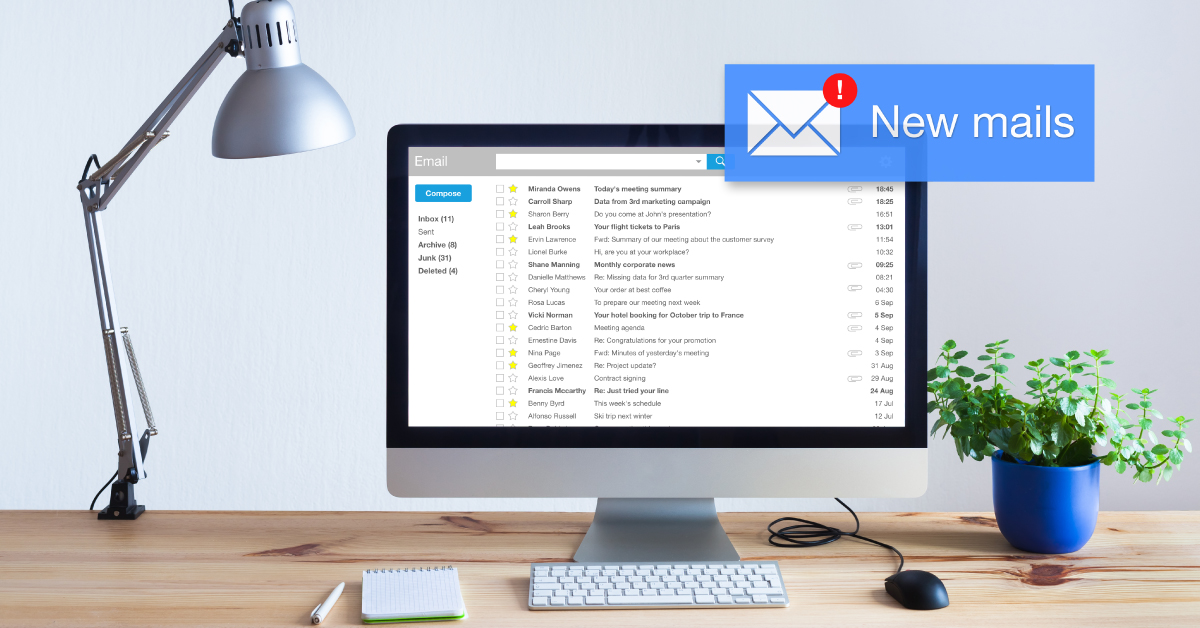Have you heard of direct marketing before? Today most brands incorporate some type of direct marketing into their brand strategy – so you probably have! Innovations in digital technology and data analytics have given new life to direct marketing over recent years. Today, businesses can leverage traditional and digital communication tools to reach customers, boost brand awareness, and drive ROI. In today’s article, we’re going to explain the concept of direct marketing and how it can help you to grow your business.
So, are you ready to become a direct marketing expert? Let’s go!
Direct Marketing Definition
Direct marketing refers to marketing that relies on direct communication with people who have shown interest in or intent to buy from your brand in the past. Direct marketing eliminates the middleman by delivering targeted and customized campaigns directly to the individual through email, post, telephone, social media, and text messaging campaigns.
Types of Direct Marketing
- Telemarketing
- Direct mail
- Email marketing
- Social media marketing
- SMS marketing
- Direct selling
There are many different types of direct marketing, so it’s important to consider which kind is best for your industry and your business. A good place to start is by looking at what competitors are doing and using feedback from your loyal customers to see how they’d like to be marketed to.
1. Telemarketing
If you own a phone, then you’ve probably been the recipient of this type of direct marketing at least once in your life. Telemarketing, or cold calling, is carried out by sales representatives in call centers who contact prospects in an attempt to sell products or services.
Telemarketing has gotten a bad reputation over the years. In fact, 90% of B2B buyers don’t even bother to respond to cold calls! That said, when marketers target the right audience with the right message, telemarketing is still an effective way to boost brand awareness and increase sales.
2. Direct mail
Direct main involves posting mail that promotes brands, products, or services to a physical address. 73% of American consumers reported that they prefer this type of direct marketing because they can decide when they want to open and read the information.
Direct mail might include a special offer or free sample, a sale announcement, or more information about products and services offered by a brand.
In today’s digitized world, combining digital and direct mail marketing will produce the best results. In fact, brands that took an omnichannel approach and combined digital marketing and direct mail saw a 40% increase in conversion rates and a 68% increase in website visits.
3. Email marketing
Email is one of the easiest and most affordable channels for businesses to communicate with customers. Email marketing involves sending promotional emails, newsletters, and transactional emails.
Through email, marketers can make customers aware of new products, discounts, and other services while using personalization and targeting to nurture and engage. Email marketing increases brand loyalty, with 80% of business professionals believing that it increases customer retention.
It’s also one of the more measurable forms of direct marketing. Marketing professionals can use metrics like click-through rate, open rate, and delivery rate to measure the effectiveness of their email campaigns and make data-driven decisions to improve their strategies.
4. Social media marketing
Social media is a valuable direct marketing tool for businesses of any size. It focuses on building a community around a brand and nurturing relationships to promote products and services on websites like Facebook, Instagram, LinkedIn, Twitter, etc.
With roughly 45% of the world’s population on some form of social media, it’s no wonder social media is one of the most effective digital marketing techniques for growing a business. There’s plenty of evidence to attest to the effectiveness of social media marketing. Take these statistics for instance:
- 55% of people reported purchasing a product after seeing it on social media
- 54% of social browsers use social media to research products and services
- 80% of social media B2B leads come from LinkedIn.
Social media marketers develop buyer personas to target and connect with leads and customers, improve brand awareness, and even make business transactions. Activities include updating accounts with news and promotions or sharing content with relevant and prospective customers.
5. SMS Marketing
This type of direct marketing uses text messages to promote products or services. It’s a quick and affordable way for businesses to reach their target audience, as long as they’ve opted-in to receiving SMS messages!
Businesses send updates, promotions, and other information to increase brand awareness and boost customer engagement. Moreover, text messages have a 98% open-rate, making this is a particularly powerful marketing channel among smartphone users.
6. Direct selling
Direct-selling is perhaps the most personal type of direct marketing. It involves marketers meeting customers in-person to sell products independently. Examples of direct selling include presentations, door-to-door sales, or hosting events to introduce an audience to a product or service.

What are the advantages of direct marketing?
If you’re a small business owner, direct marketing offers a range of advantages to help grow your business. Some of these advantages include:
-
- Helps to build relationships with new customers
- Provides customers with personalized communication
- Improves brand loyalty
- Allows you to optimize your marketing budget
- Provides customers with shareable content to boost brand awareness
- Increases sales
5 tips for building effective direct marketing strategies
Building an effective direct marketing strategy isn’t as difficult as it sounds! Below are 5 tips to optimize your efforts.
1. Define your target audience
Direct marketing can sometimes come across as too aggressive. Compared to inbound marketing where the customers make the first move, direct marketers can seem a little, well… pushy. However, using the right tactics with the right audience can make a huge difference.
Outbound marketing strategies target a broad audience, whereas direct marketing requires a well-defined audience. In the same way that creating buyer personas can help you to find your audience on social media, they enable you to aim your direct marketing efforts towards the people who will care.
The messages your direct marketing campaigns send should speak to specific audience segments. You should offer an experience that’s personalized and tailored to meet their needs, expectations, and desires. With 91% of consumers more likely to shop with brands that provide relevant offers; a clearly defined target audience can boost conversions and maximize ROI.
2. Include effective CTAs
The goal of a direct marketing strategy is to increase sales and grow brand awareness. Therefore it’s important to include a relevant and effective call to action (CTA) in your direct marketing campaigns. Your CTA should direct leads to a landing page with an enticing offer or action to continue their journey with your brand.
The CTA you choose should be creative and relevant. It should let buyers know exactly what they need to do next and what they’ll get out of it.
3. Maintain relationships post-transaction
Just because you convert a lead into a customer doesn’t mean you should give up on your direct marketing efforts with them! Maintain the relationship post-transaction by continuing to provide them with relevant offers, promotions, and information. This way you’ll develop a relationship built on trust with the customer and build their brand loyalty.
Effective direct marketing strategies can reactivate consumers by segmenting audiences based on where they’re at in their buyer’s journey. This ensures you’re not bugging current customers with sales pitches they’ve already heard, but providing them with more relevant reasons to make another purchase.

4. Leverage the power of data
Ensure that your direct marketing strategies are measurable. Luckily, direct marketing campaigns are measurable by nature. Companies can measure success by tracking how many consumers make the call, click on the CTA, or make a purchase using the coupon.
By leveraging the data and information gleaned from previous campaigns, you can inform future ones with data-driven decisions and trends. Understanding which campaigns resonate with your customers the most ensures that you stay on track to success.
Use customer data to better target and curate content for each person. We’ve already mentioned the power of personalization; so use customer data to ensure the information, offers, and deals you’re sending them accurately addresses their pain points and caters to their needs. This will not only boost conversions but will result in improved brand loyalty and increased customer lifetime value.
5. Use omnichannel strategies to reach a wider audience
Although direct mail marketing is still an effective strategy, today’s consumers expect to connect with brands across diverse digital channels. An omnichannel strategy can hugely increase your brand’s reach and sales potential, making it a more effective approach for modern direct marketing.
When it comes to defining your direct marketing strategies consider your target audience and the digital channels they most frequently use. If your target audience is largely made up of smartphone users, it might be worth considering SMS marketing. If your audience is made up of mostly millennials and Gen X, then social media is the way to go.
Using a combination of direct marketing strategies will guarantee you’re reaching your audience where they want to be reached; whether that’s on Facebook, on the phone, or via a catalog in the mail.
Next steps in your direct marketing journey
Hubspot found that 63% of companies report that generating traffic and leads is one of their biggest marketing challenges. With direct marketing, you can market to new and existing customers with personalized, targeted information. The result? Loyal, engaged, and happy customers.
Are you ready to boost your business with direct marketing? The first step is to define your target audience!
Do you know which are your targeted audiences?
Download our buyer persona template and start building your direct marketing strategy today.

